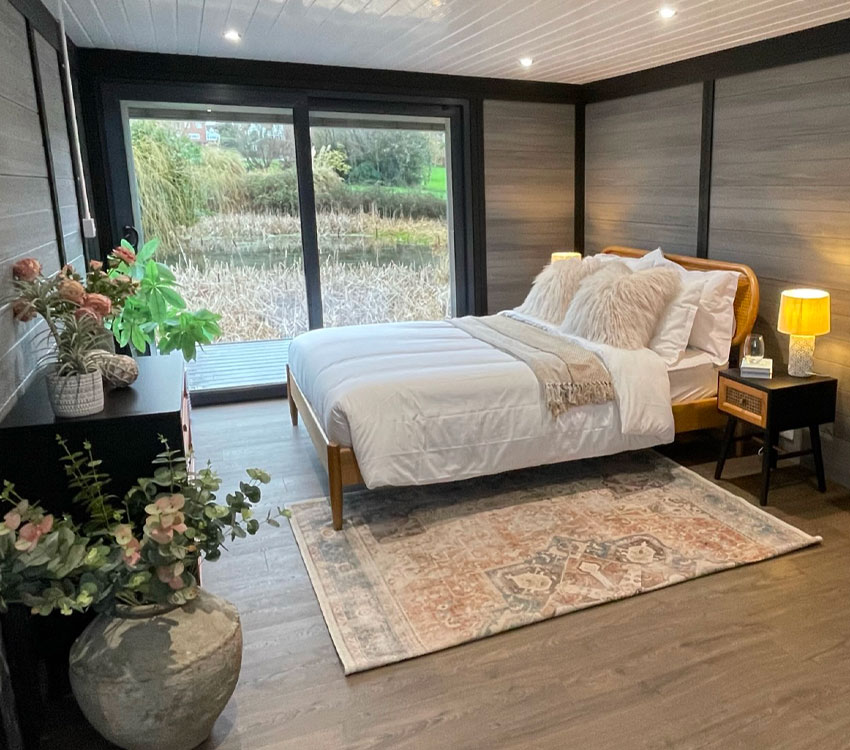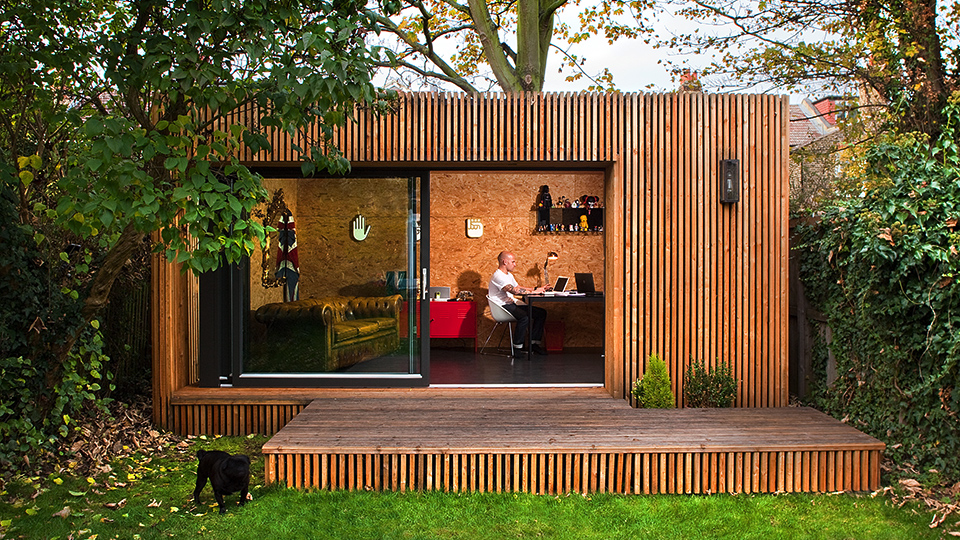Top Tips For Planning Permission On Garden Outhouses
Top Tips For Planning Permission On Garden Outhouses
Blog Article
What Is The Planning Permit Required For Garden Rooms And Other Alterations Of Usage?
When determining whether planning permission is needed for conservatories, garden rooms outhouses, garden offices and outhouses or extensions, "change of use", also known as "change of the purpose" is an essential role. The factors to consider when planning permission is required in relation to a change of usage include changing from residential to non-residential use:
In most instances planning permission is required to transform non-residential structures (such as agricultural buildings) to residential areas or garden offices. This is because a modification in the usage of the building is needed.
Garden Rooms: Living Space
The usage of an outdoor space for distinct living area (e.g. as a guesthouse, rental unit or other similar arrangement) is a change of the use. Planning permission is required to make sure that the structure is in compliance with residential standards and regulations.
Business Use:
Planning permission may be required if you intend to use your garden space or conservatory for an office (e.g. an office space for home-based businesses that have frequent visitors or employess). The impact of the project on the surrounding environment including the noise, traffic and parking, may require planning permission.
Community or educational use
Planning permission is required to convert a garden structure into a space used for educational or community purposes (such as a room for meetings or classroom). The local authority evaluates the location's suitability and its impacts on the surrounding areas.
Impact on local infrastructure:
Planning permission is usually required for any change in use which has a significant impact on local infrastructure, e.g. roads drainage, public services, and so on. Local planning authorities will consider the impact of these changes in the process of applying for permission.
Dual Use:
Planning permission may be required to clearly define and control the various uses of the property.
Increased Footfall and Traffic:
If the change of usage is likely to increase traffic or footfall (e.g. the conversion of the garden into a smaller retail space), planning permission is required to consider possible impacts to the local area.
Building Regulations Conform:
Although it might not be a strictly planned issue but any change in the usage should be governed by the building codes to ensure standards of safety, energy efficiency and health. It is of particular importance to convert spaces into living spaces.
Environmental Impact:
Planning approval is required for all changes of use which could have an impact on the environment. For instance, the conversion of agricultural land to residential use. An environmental study may be required as part of the application.
Community and Amenity Impact
It is crucial to consider the impact the changes has on the local amenities within the area as well as the general character of the place. Planning permission is required to convert the garden into a cafe for instance, in order to align the plans of the local community and to preserve the amenities of the area.
Designated Areas
Modifications to the use of land are strictly controlled in designated areas such as National Parks or Areas of Outstanding Natural Beauty. This is to preserve the character and appearance of these areas. In these cases, planning permission is required.
Local Planning Policies
Local planning authorities have guidelines that differ in the way they handle changes of use. It is important to read these policies to know the requirements for changes and the criteria that must be fulfilled.
In essence Planning permission is usually needed for any significant modification to the use of a garden room, conservatory or outhouse, garden office or extension. It ensures the new use will be appropriate for the area, complies with local and national policies, and address any possible impact on the environment or community. Consult with your local planning authority at the beginning of the planning process is vital to identify the exact requirements and obtain the necessary approvals. Take a look at the most popular garden office for site recommendations including composite garden office, outhouse garden rooms, insulated garden rooms, outhouses for garden, what size garden room without planning permission uk, luxury outhouse, do you need planning permission for a garden room, gym outhouse, garden rooms brookmans park, garden rooms in St Albans and more.
Concerning The Environmental Impact, What Type Of Planning Permission Do You Need To Get For A Garden Room?
It is crucial to think about the environmental impact when designing garden rooms or conservatories. Consider these key environmental factors:
If the proposed structure would affect wildlife habitats within the area, for example hedgerows, trees and ponds, you'll require permission to plan the project. It is possible to conduct an ecological survey in order to minimize and assess the impact.
Habitats and species that are protected:
Permission is required if there are protected species at the site (e.g. bats, newts or other species) or if they are located in protected habitats or nearby (e.g. Sites of Special Scientific Interest SSSI). To ensure their protection, specific measures must be implemented.
Tree Preservation Orders (TPOs):
Planning permission could be required if the structure includes the removal or modification of trees protected by TPOs. Local councils will be able to assess the impact of the proposed structure, and may require that replacement plantings be made or other mitigation.
Flood Risk and Water Management
Planning permission is needed for any development that is located near water bodies or flood-prone areas. It could be necessary to perform a flood risk assessment in order to make sure that the building isn't vulnerable to flooding and includes drainage solutions.
Sustainability in construction:
The planning permission is required to make sure that sustainable construction materials and practices. This could include energy efficiency, carbon footprint of building materials and insulation.
Drainage of Surface Water Runoff
The most important consideration to consider for the environmental is how the new structure will impact the drainage system and the runoff of surface water. Planning permission is required to ensure that drainage systems are properly constructed in order to prevent flooding and waterlogging.
Soil and Land stability:
Planning permission is required when the construction could affect soil's stability or quality. The planning permission is required if the construction could affect soil quality or stability of the land.
Air Quality
Planning permits are required for development near industrial zones or major highways that could affect the local air quality. This ensures that the levels of air pollution remain within acceptable levels, and mitigation measures are in place.
Noise Pollution:
If the planned use of the garden room or extension will likely to cause substantial noise (e.g. an office or music studio) Planning permission is required. The local authority assesses the level of noise and potential impacts on the environment and neighbors.
Waste Management:
It is important to manage the waste appropriately during and after construction. Planning permission ensures that the construction site has recycling facilities and waste disposal to minimize environmental impact.
Energy Efficiency
The planning permission could include the need for energy efficiency, such as solar panels, high-performance glazing, or any other green technologies. This helps reduce the environmental footprint of the building.
Environmental Regulations Compliance:
Environmental regulations at both local and national levels, including UK Environmental Protection Act. Planning permission is required to ensure that the development meets the environmental and legal conditions.
The planning permissions granted for garden rooms or conservatories and outhouses, office buildings and garden offices must consider various environmental aspects. Check with the local authority for planning at the earliest possible point during the planning phase to ensure that you know the particular requirements. View the best bespoke garden design st albans for blog examples including garden rooms near me, out house, garden rooms hertfordshire, composite garden rooms, out house, small garden office, garden buildings , out house, what is a garden room, garden rooms and more.
What Planning Permissions Do You Require For Your Garden, Rooms And Other Structures In Relation To Agricultural Land?
You must consider the following restrictions and planning permissions when building a garden room, conservatory, outhouse, garden office, or an extension on agricultural property. Here are some important things to take into consideration the following: Change of Use
Land designated for agriculture is generally used for farming and other related activities. Changes in the use of the land to residential or for garden structures typically requires planning permission. This is because it is a change from the original agricultural use.
Permitted Development Rights:
The land of agriculture is usually subject to different limits on development compared to residential land. Some agricultural buildings, for example, can be built without a planning permit. But, these are typically for farming-related structures that are not garden rooms or offices for residential use.
Size and Scale
The size and scale of the structure proposed will affect whether planning permission is needed. Planning permission is typically required for large buildings or structures that cover a greater area.
Effects on use of agri-food products:
It is more likely that planning permission is required if a new structure interferes in the agriculture use of the land. For example, reducing the available area for crops or animals.
Green Belt Land:
When agricultural land is also designated Green Belt, additional restrictions are put in place to prevent urban sprawl. Typically, any construction situated on Green Belt property requires planning approval, and must adhere to specific requirements.
Design and Appearance
The design and style of the new structure should be in harmony with the rural nature of the area. Planning permission is required to ensure that a construction project will not adversely influence the surrounding aesthetics or landscape.
Environmental Impact:
Construction on agricultural lands must be considered in relation to the environment. A planning permit may be required to conduct an environmental impact assessment in order to make sure that the new structure doesn't harm local ecosystems or wildlife habitats.
Proximity to existing buildings:
Planning requirements can be affected due to the proximity of a proposed garden office or room close to an existing building for agriculture. Structures that are built near farms are treated differently than those situated on open fields.
Access Infrastructure
The impact on access and infrastructure, such as roads, water supply, and waste management need to be considered. Planning applications will be required to determine if the current infrastructure is adequate to support the construction.
Use Class Order:
Planning law specifies the precise applications of land for agriculture. It is normal to require planning permission in order to change the land's classification to permit non-agricultural use.
Local Planning Policies
Local planning authorities has specific guidelines for agricultural land. These policies determine whether or not planning approval for non-agricultural buildings is granted in accordance with the local development plans as well as the requirements of the community into consideration.
National Planning Policy Framework (NPPF):
In the UK, National Planning Policy Framework (NPPF) gives guidelines on the best way to have land developed and utilized. The NPPF is used to assess the planning permissions for structures built on land that is agricultural. The framework focuses on sustainable development, rural protection and conservation.
Planning approval is required for conservatories, extensions and outhouses as well as garden offices on agricultural land. This is because the land has to be altered to conform with national and local plans. To get the most effective results you must consult the local authority for planning. Follow the most popular office pods for garden for website recommendations including 4m x 4m garden room, costco outbuildings, costco garden office, garden rooms brookmans park, Tring garden rooms, outhouse garden, Tring garden rooms, Tring garden rooms, ground screws vs concrete, garden room and more.